The Bluetick Coonhound is a fairly recent addition to the AKC, although this American breed has been around since the 1940’s. Like other coonhounds, the Bluetick is an active dog and is more commonly owned for hunting purposes than as a pet. With the right owners, however, they can be loyal and devoted companions as long as the owners realize that these are stubborn and determined animals. If not given outlets for thier strong hunting drive they can be frustrating to live with. For owners that aren’t interested in hunting, activities such as nose work and tracking can be excellent alternatives!
Blueticks require extensive regular exercise, and enjoy racing and frolicking outside with their families! They require room to do this, and don’t tend to thrive in apartment settings. When tired out, most appreciate going inside to receive attention and affection. Many Blueticks thrive off of attention in general – whether being given by adults or children. In fact, they are capable of making very good family dogs! When given enough exercise, the breed is boisterous outside but mellow inside.
Although devilishly smart (when they feel like it), the breed is headstrong and can be pushy if they do not feel like their owner is a good pack leader. Obedience training is absolutely necessary to nip this behavior in the bud! Because obedience training can be a learning curve for most people, they do not make good pets for first-time dog owners. Blueticks are often noted for being difficult to train, and almost impossible to off-leash train. It is, in fact, possible to train this breed off-leash although the owners must put a lot of work into doing so! Even the most highly trained Blueticks still require fenced yards to keep them from wandering off the property.
The Bluetick Coonhound has a very distinctive voice which he will use freely – especially if he catches wind of a racoon! This baying (like a musical howl) is quite loud and can be irritating to neighbors, although he tends to be quiet inside the house if trained while young. His hunting instincts also make him apt to chase after small (and occasionally even large) animals. Once he has caught the scent, he will be on the hunt whether you want him to or not. He does not normally do well in households with cats or small pets. 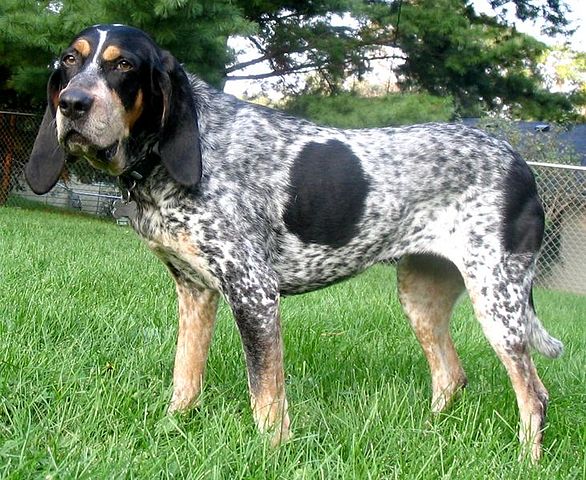
As a pack dog, the Bluetick Coonhound doesn’t like to be alone. He prefers to have his owner in his sights at all times, whether that be sleeping at the foot of the bed or traveling in the car when his owner takes a trip. Many do not like to be left at home by themselves while the owner goes to work. There is a solution to this problem however – Blueticks have an easier time with a canine companion if they are going to be left home alone for long periods of time. If keeping a pack of several coonhounds together… just remember to keep food and trash put away. These dogs have excellent noses and are very food-driven!
For the most part, grooming a Bluetick is a breeze. Their short smooth coat requires very little upkeep – just the occasional brush out and bath. The coat sheds only very minimally. Nails and teeth need to be kept up with, of course. However it is actually the ears that need the most attention – long droopy ears can be prone to infection if not examined and cleaned on a regular basis. All-in-all, however, the breed is very hardy and resilient. A weekly ear cleaning will usually ensure that the dog will not have ear issues. These dogs are generally healthy overall and don’t tend to require expensive visits to the vet, although hip dysplasia is known to occur in some lines.
Blueticks are sensitive dogs and can be frightened of loud sounds such as thunderstorms. Their timid nature does not make them well-suited as guard dogs, and in fact they do not tend to be territorial at all anyway. Many are unsure when meeting strangers and are sometimes downright shy. Early socialization from puppyhood is the best way to keep a Bluetick Coonhound from becoming a scaredy-cat.


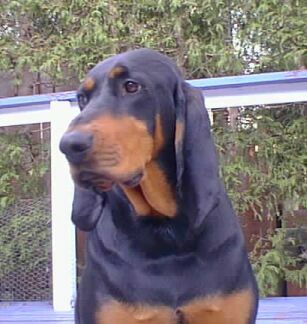
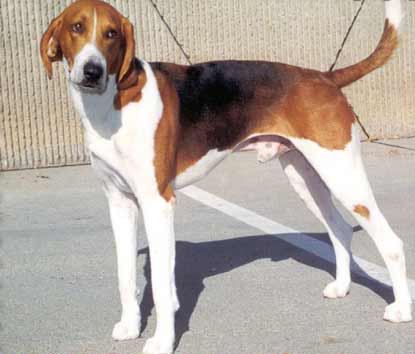
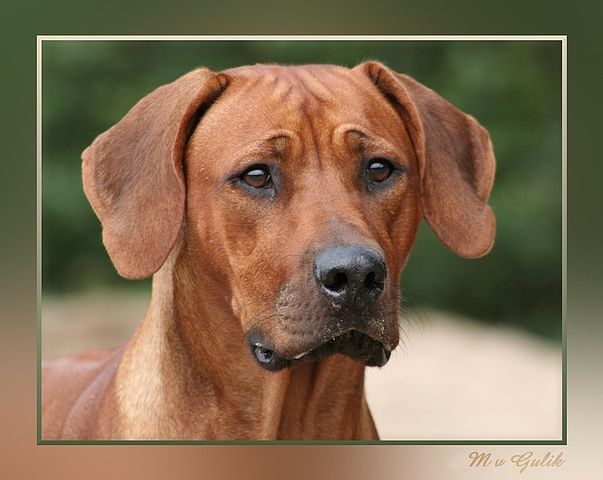

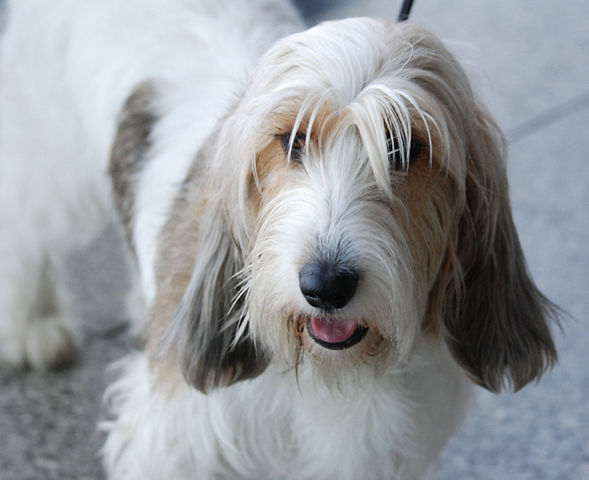

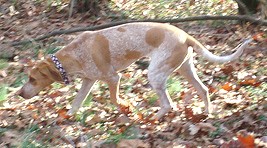 As puppies, English Coonhounds can be particularly destructive, usually because they are so curious about the world and just want to deconstruct everything to see how stuff works! Even when adults, they will continue to chew up objects unless trained not to. The breed can (and will) get into everything, which means a combination of obedience training, exercise, as well as correct household management.
As puppies, English Coonhounds can be particularly destructive, usually because they are so curious about the world and just want to deconstruct everything to see how stuff works! Even when adults, they will continue to chew up objects unless trained not to. The breed can (and will) get into everything, which means a combination of obedience training, exercise, as well as correct household management.